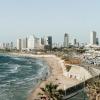Soil and water conservation in Ethiopia
Introduction
The highlands of Ethiopia have been subject to extensive land degradation leading to food insecurity. The densely populated and intensively cultivated Tigray region, in northern Ethiopia, was notorious for the 1984 famine. With an area of 5.3 million hectares and a population of 4.4 million, it is a large area. Only 20% is cultivated in small holdings. The highlands get 1500-2300 mm of rain, but the lowlands get only 500 mm in the east and 1200 in the west. Thus the eastern lowlands are semi-arid. Rain is erratic. Soil erosion is a severe problem.
Over the past decade or so, consistent soil and water conservation has changed the landscape. More than half the farmland has been covered, raising crop yields by as much as 100%. This story of success shows how working at scale makes a big impact.
A variety of measures have been tried in Tigray. In 1974, the World Food Programme supported terracing and afforestation. But this met with limited success as local ownership was limited. The conservation programme took root as it were when the Tigray Peoples Liberation Front (TPLF) assumed power. Between 1988 and 2002, more than 600,000 hectares were covered to reduce erosion.
Reviving a tradition
The programme was revised and revived in 2007. It had several components -
- A focus on cultivated and barren land. Farmers were to manage the cultivated land, while the barren land was to be managed by the community as a whole
- An emphasis on harvesting water and retaining moisture through infiltration ditches in low-rainfall area, as well as stone bunds.
- Systematically covering areas and preventing grazing by animals for five areas. This let grass and vegetation regenrate
- Gully plugs, checkdams, etc., along with plantation of grass and fruit trees
Every community member was required to work 40 days in 2009 and 2010, and was not paid. In 2011 this was reduced to 20 days. The work was conducted under the watershed programme.
The programme gained traction among people because of their engagement. They were also engaged in planning. In a day, a man was expected to build 5 m of stone bunds (for women, it was half that). Work was done in the off season, from January to February, when there was no farming.
Resources from the so-called Productive Safety Net Programme were integrated with the soil water conservation programme. People who had little or not food were provided work against payment in cash or kind. From 2009 to 2011, 568,000 ha were treated under the soil and water conservation programme. Farmers also invested in land improvements by leveling, terracing, soil amelioration, and digging wells.
Local planning
Local planning and implementation were key to the success. This was missing in the earlier efforts. The regional Bureau of Agriculture and Rural Development (BoARD) instituted a system of capacity building. Under this, the Tigray Bureau of Agriculture and Rural Development provided training and planning support to the districts (woredas). The Woredas trained and supported village clusters (tabias) who in turn trained farmers along with Woreda representatives in sub-catchments. The main activities were carried out at this level.
More local engagement was ensured by engaging farmers’ unions, women and youth associations in planning and implementation the activities. Unlike earlier, where people were only food recipients, this one had communities as active partners. It helped them understand the impact of soil and water conservation activities. The collective mobilization programme importantly encouraged private investments in land improvement and well development.
Implementation at this scale changed the local environment. Springs started to flow, local species of trees started to grow and grasslands revived, creating a positive feedback loop: ‘success breeds success’. People tried out with new crops (fruit trees) and new land management methods (mice control).
The rainwater harvesting structures included percolation pits, micro-basins, rockfill dams, check-dams, in addition to gully plugs, contour bunds and plantations.
Benefits and lessons
The benefits noted by local people are:
- Higher rates of water infiltration and increase in soil moisture in their farmlands.
- Increased crop yield (50-100%) due to improved moisture conditions, especially areas with limited rainfall.
- Steadier base flows of local streams and reduced sedimentation.
- Reduced flooding of farmlands.
- Emergence of new springs at lower parts of the catchments and rising of groundwater levels.
- Change in the micro-climate around the treated watersheds and around closure areas.
The programme offers many lessons. The scale and speed of implementation are critical for success to beget success. Local people have to be engaged in planning and implementation. Buffer management is as important as controlling soil erosion. Implementation, while decentralised, can be a haphazard but this can work if there is a strong technical support. It is also important to combine modern techniques with traditional knowledge.
The Tigray programme has showed that rainwater harvesting and soil conservation go together.
(Excerpted from Transforming landscapes, transforming lives : the business of sustainable water buffer management).





Trending Discussions
From around the site...
“Absolutely interested! I'll connect via email to discuss reviewing and enhancing the Economic Analysis of Climate...”
Adaptation-related events at COP28 (all available to follow/stream online)
“Please check out these adaptation-related events taking place at COP28 - all available online (some in person too if...”
Shining a light for biodiversity – four perspectives to the life that sustains us. Four hybrid sessions.
“30 November to 19 December 2023 - Four Sessions Introduction The SDC Cluster Green is happy to invite you to the...”